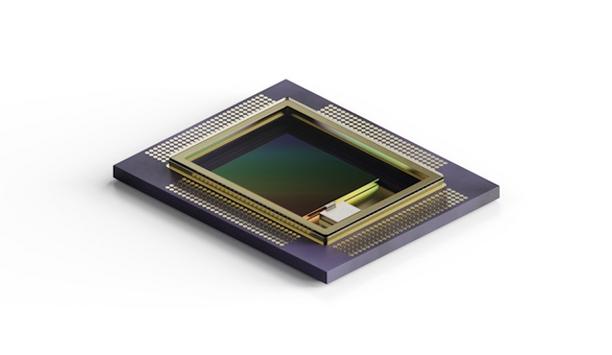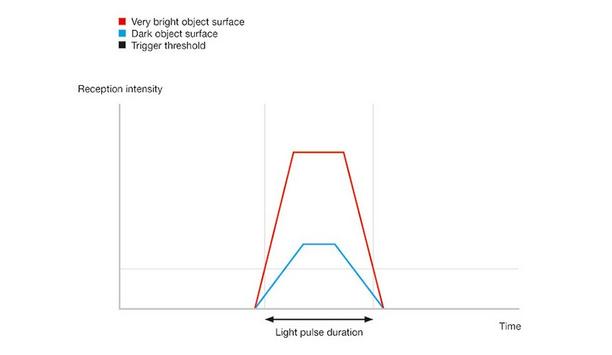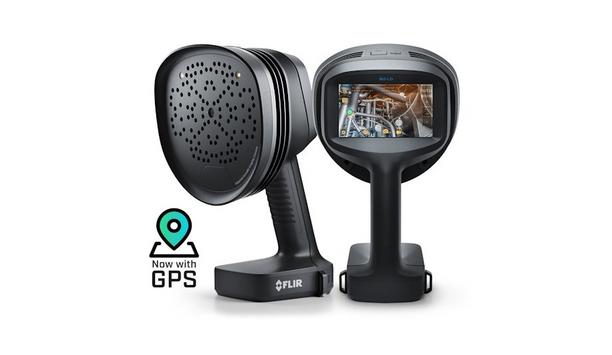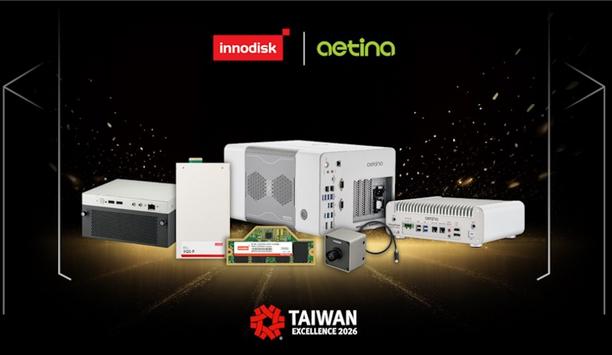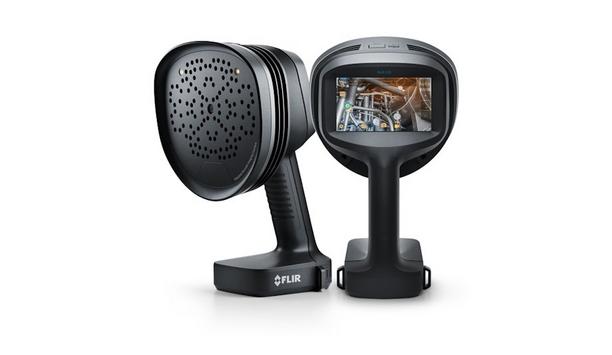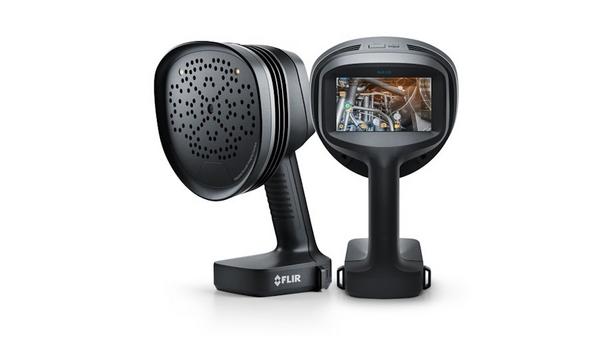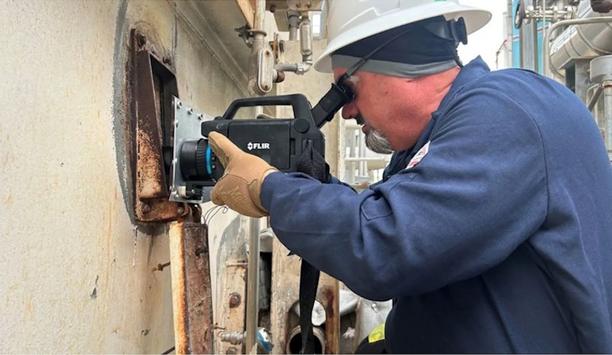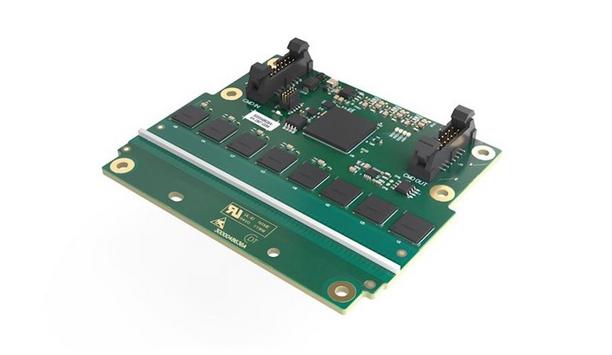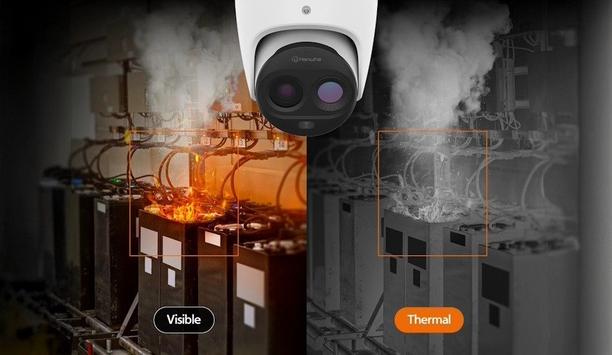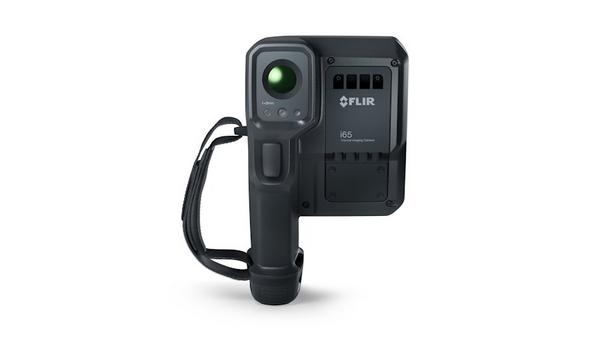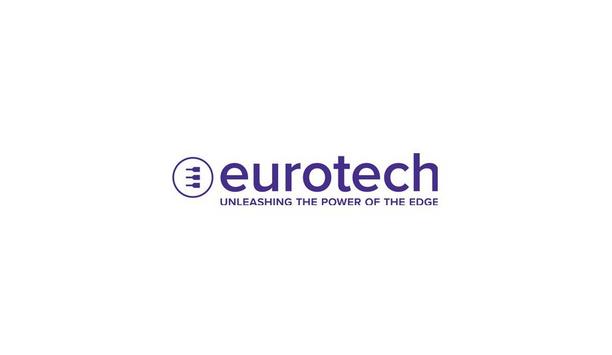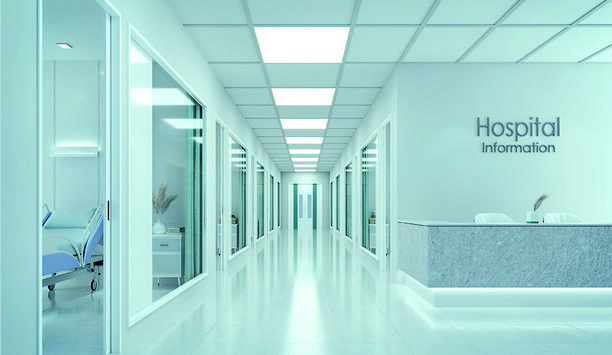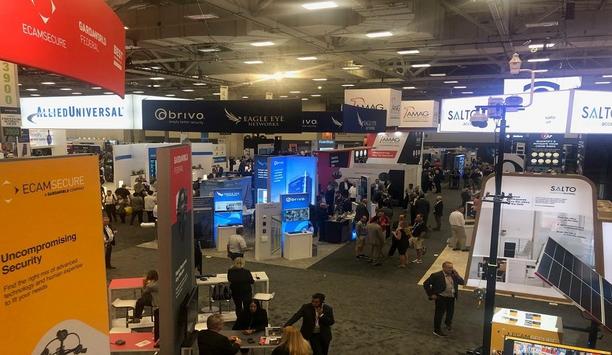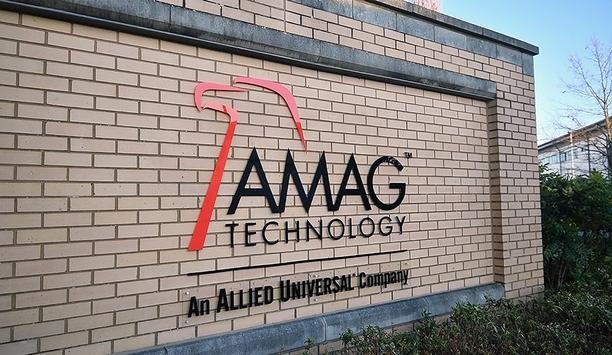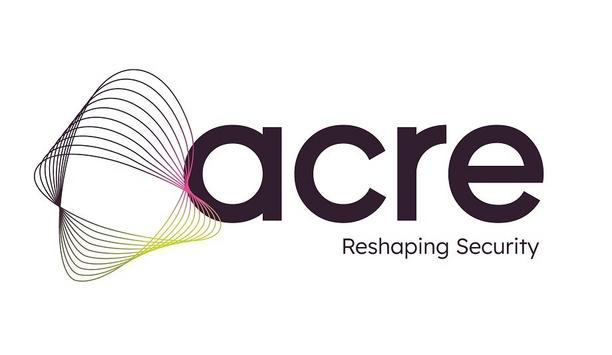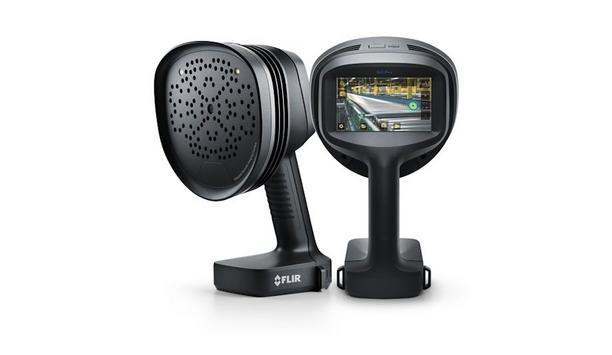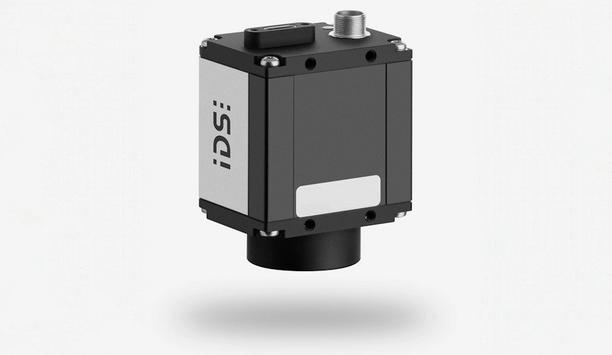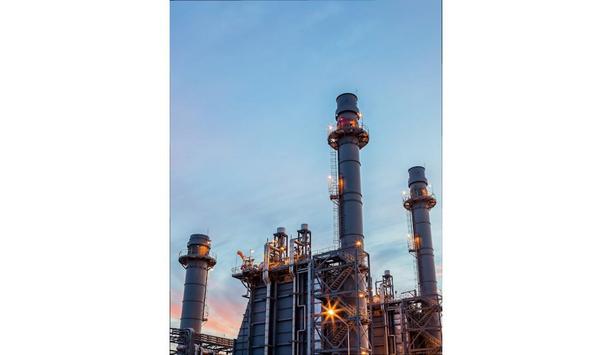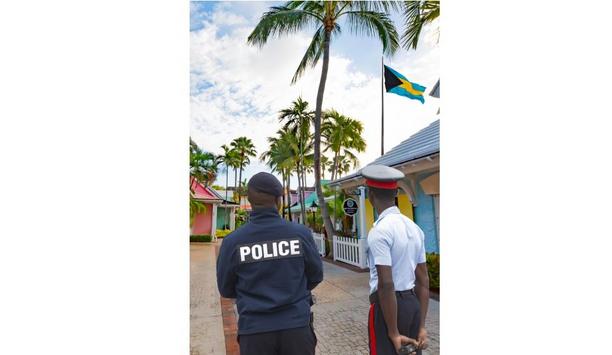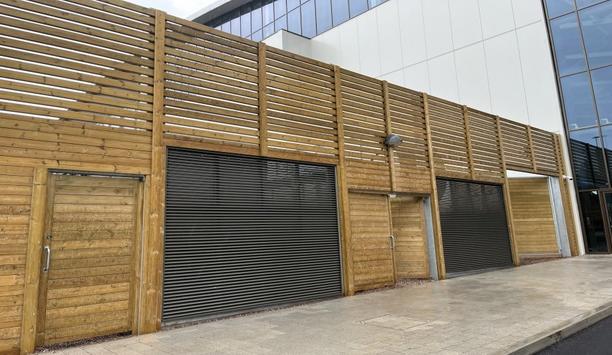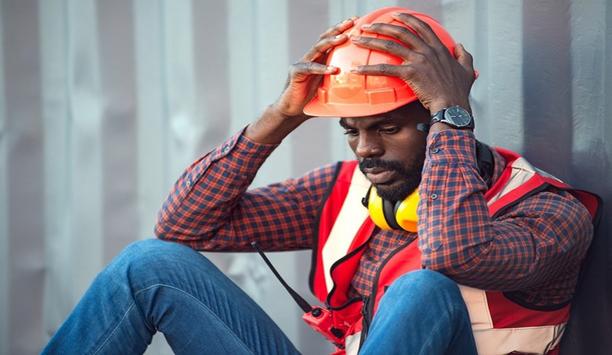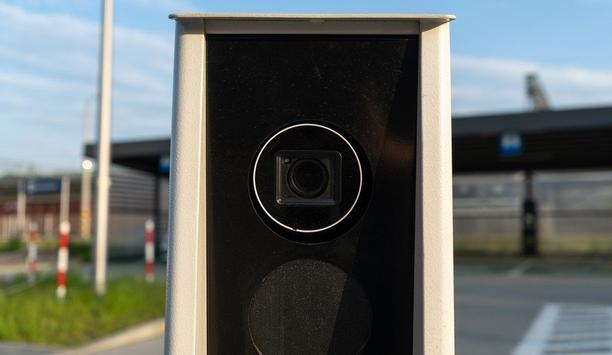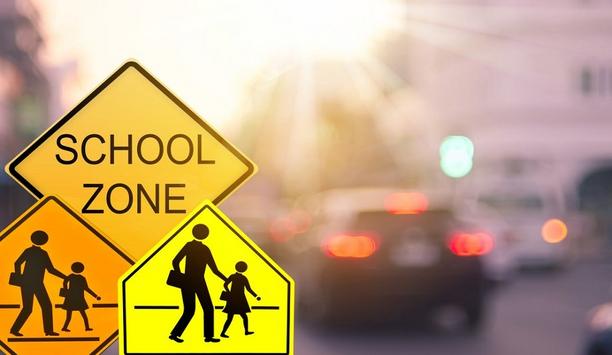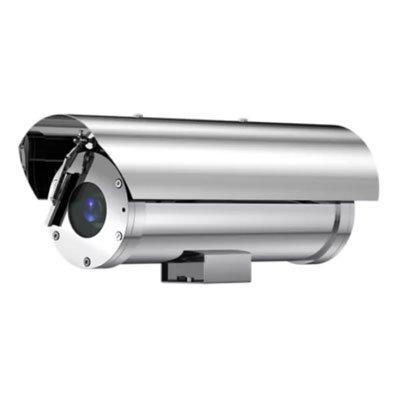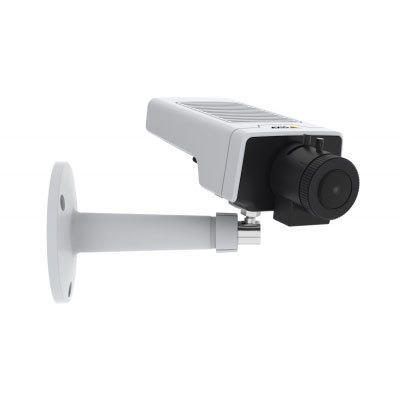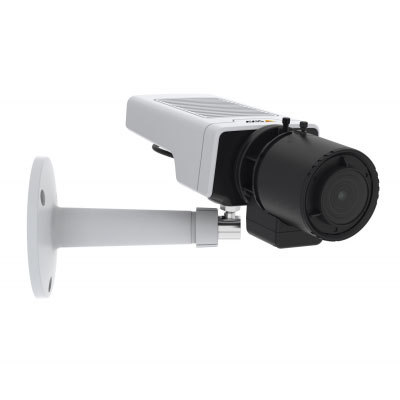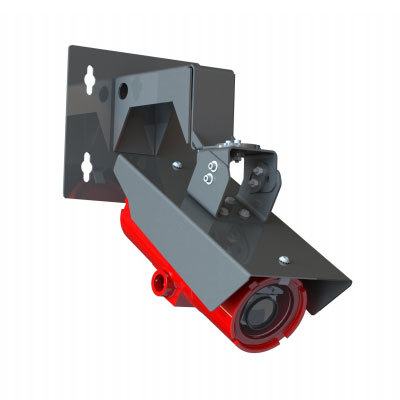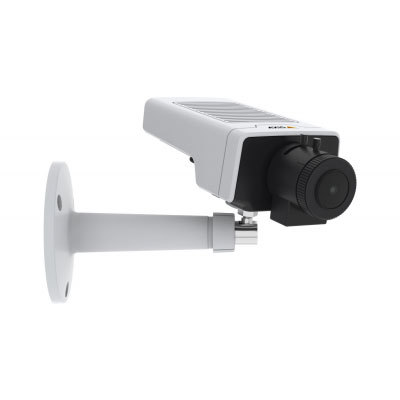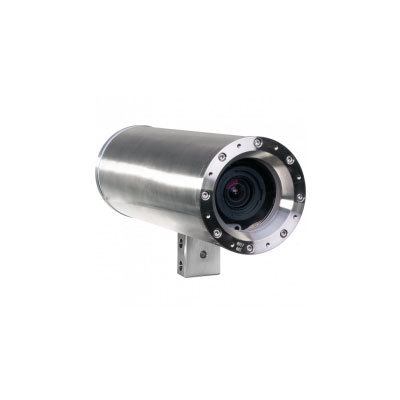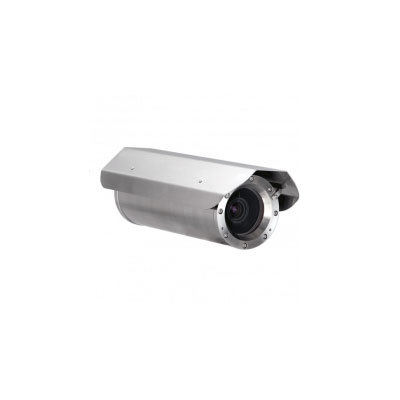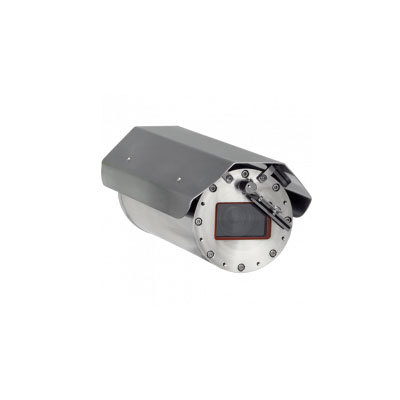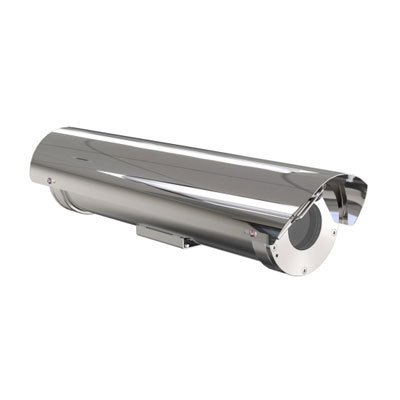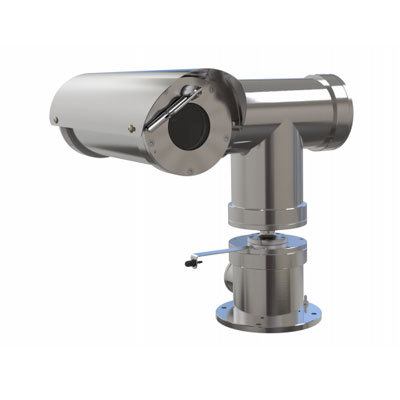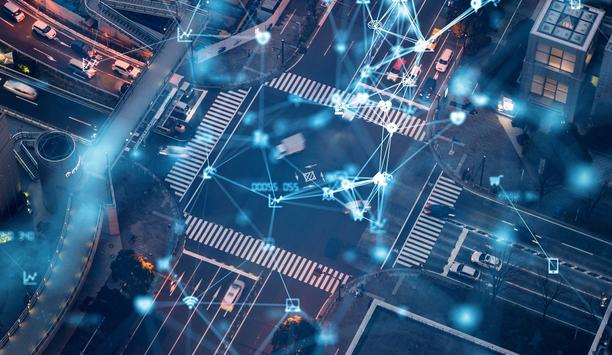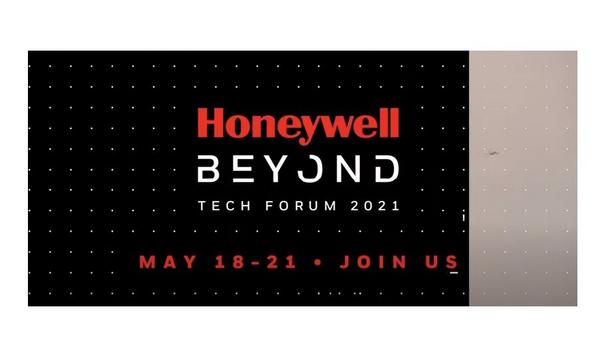Industrial surveillance
Voyant Photonics, the pioneer in chip-scale frequency-modulated continuous-wave (FMCW) LiDAR, now announced its Helium™ Platform of fully solid-state LiDAR sensors and modules. The solution is built on a silicon photonics chip, enabling a breakthrough architecture designed to deliver unprecedented reliability, integration, and performance for industrial automation, robotics, and mobile autonomy. Voyant’s proprietary Photonic Integrated Circuit Leveraging Voyant’s proprietary...
Leuze uses artificial intelligence (AI) to significantly improve the measurement accuracy of optical distance sensors for challenging industrial applications. This innovation improves measurement accuracy without the need for additional computing resources during operation. The solution is based on a neural network. Object surfaces as challenges Optical distance sensors with time-of-flight technology (TOF) offer practical benefits. The sensors enable fast, contactless measurement of large dis...
Flir, a Teledyne Technologies brand, announced built-in GPS for its Si2-Series acoustic imaging cameras. The upgrade adds precise location data to predictive maintenance inspections, helping service providers and reliability teams streamline workflows across multi-site operations, long-distance inspections, and utilities and power-transmission applications. Si2-Series cameras With integrated GPS, every acoustic image captured by the Si2-Series cameras now includes geospatial metadata that sea...
Innodisk Group, a pioneer in edge AI solutions, has been recognized with six honors at the 2026 Taiwan Excellence Awards. Among the winners are four products from Innodisk and two from its subsidiary Aetina, spanning DRAM modules, data center SSDs, smart camera modules, and AI edge systems. The awards highlight Innodisk Group’s transformation from embedded hardware expertise toward a unified edge AI ecosystem integrating storage, computing, and sensing. Advance edge AI innovations Build...
Flir acoustic imaging cameras uncover hidden leaks and inefficiencies in cement plants, helping teams reduce downtime, cut energy costs, and boost performance. With intuitive operation, precise leak detection even in noisy or hard-to-reach areas and smart reporting, maintenance becomes faster, safer, and more cost-effective than ever. Concern in the quarrying and cement industry The global cement market was valued at $361 billion in 2024 and is forecast to grow at a CAGR of 5.1% through 2025&...
Flir’s acoustic imaging technology helps manufacturers find and fix leaks fast, turning invisible losses into measurable energy savings and improved safety across every stage of production. conventional manufacturing methods The global glass industry is worth over 120 billion dollars a year. The market is generally split into different segments such as flat glass, container glass and specialty products. The industry has changed significantly in the past few decades. In the early 1970s,...
News
Infrared thermography has become an indispensable tool in the petrochemical and refining industries, and Jason Czajkowski, IRT Thermography Manager at PROtect, is leading the charge in applying the latest technologies to improve safety, efficiency, and asset integrity. A Level III #13966 certified Master Thermographer and CWI, Czajkowski and his team at PROtect are early adopters of FLIR’s newest furnace inspection tool: the FLIR G609. This article outlines why PROtect transitioned from the trusted GF309 to the advanced G609 and how this upgrade is transforming furnace inspections in high-heat industrial environments. Why upgrade? The resolution advantage For years, the FLIR GF309 was the standard for IR furnace inspections, but it offered only 320 × 240 pixel resolution. Czajkowski recognized the limitations this presented specifically, lower image clarity and reduced ability to spot subtle temperature anomalies at a distance. The FLIR G609, with its 640 × 480 resolution, delivers over four times the pixel count, enabling inspectors to identify small, early-stage issues such as coke buildup or flame impingement that may have gone unnoticed with older technology. In an industry where early detection can mean the difference between a planned repair and a catastrophic failure, resolution matters. Smarter technology in the G-Series Beyond improved resolution, the G609 brings a suite of advanced features that modernize the inspection process. Its redesigned heat shield mounts with a single screw and provides superior protection during live furnace inspections. The intuitive 4-inch touchscreen interface allows for quick navigation, even with gloved hands. Czajkowski emphasizes the value of the 1-Touch Level/Span feature, which automatically adjusts image contrast with a single tap. This allows inspectors to focus on capturing actionable data instead of fumbling with manual settings. Additionally, the G609’s custom furnace lens is calibrated to capture clear thermal images through furnace flames and refractory, something legacy systems struggled with. According to Czajkowski, "It’s not just about seeing through the flame it’s about seeing what matters behind it." The software advantage: A total inspection solution Pairing the G609 with FLIR’s Thermal Studio Pro software transforms the camera into a full inspection and reporting solution. PROtect leverages the Route Creator plug-in to plan inspections in advance, assigning inspection points and optimal paths. Once on site, the G609 guides inspectors through this pre-planned route, ensuring no critical component is missed. Thermal Studio Pro streamlines post-inspection reporting by batch processing images and applying consistent templates. Reports that once took hours to compile can now be generated in minutes, improving turnaround times for clients. "The software enables consistency and speed," says Czajkowski. "We can now deliver high-quality reports faster than ever before." Future-proofing and field learnings Czajkowski notes that the G609 isn’t just an improvement in specs it represents a long-term investment in reliability. Its durable design, compatibility with evolving software platforms, and ease of use make it ideal for onboarding new technicians without sacrificing inspection quality. Real-world usage continues to validate its benefits; PROtect has already identified developing issues during inspections that older models would have missed. Conclusion The FLIR G609 has redefined what’s possible in IR furnace inspections. With Jason Czajkowski’s expertise guiding implementation at PROtect, the new technology delivers unparalleled image quality, user-friendly controls, and efficient software integration. As the refining and petrochemical industries demand ever-higher standards of safety and uptime, PROtect’s forward-thinking approach ensures its clients stay ahead of the curve.
Hikvision hosted its 2025 HikTech Star Tour in Hangzhou, bringing together over 100 tech professionals to celebrate their outstanding video creations from this year's HikTech Star Show. Under the theme "Rising Stars, Reaching New Heights," participants discovered cutting-edge AIoT applications and strengthened connections within the global tech community. Real-world challenges Building on the strong momentum from last year, the HikTech Star Tour 2025 expanded its reach. "This isn't a one-time event," says Derek Yang, VP of Hikvision's International Business Center, adding "It's a platform where installation partners bring real-world challenges and together we develop solutions. We're building practical expertise across this global network." Industrial immersion: From digital manufacturing to professional applications Throughout the event, HikTech Stars experienced Hikvision's manufacturing excellence firsthand. At the Tonglu manufacturing base, participants observed data-driven production systems in action. Digital dashboards, automated assembly processes, high-precision inspection technologies, and intelligent warehouse solutions demonstrated how quality control and traceability are built into Hikvision's products. Technical sessions brought HikTech Stars together with Hikvision’s product and R&D teams, combining strategic insights and hands-on learning. Participants took part in configuration exercises, performance benchmarking, and in-depth discussions. Real-world case studies explored successful deployments, technical challenges, and breakthrough solutions, fostering knowledge exchange and inspiring new approaches across the industry. Innovation spotlight: From AI empowerment to scenario-based discovery The program featured the launch of AI-empowered SMB solutions, showing how artificial intelligence helps small and medium-sized businesses and their installers work more efficiently and grow faster. These innovations leverage Hikvision's Guanlan Large-Scale AI Models to boost performance and intelligence across product portfolios. Exhibition facilities demonstrated the integration of IoT perception, artificial intelligence, and big data with industry expertise. Through scenario-based demonstrations covering video security, industrial IoT, and cross-sector applications, participants explored practical deployment insights. Interactive zones brought end-to-end workflows to life. Engineers led hands-on sessions on device operations, system configurations, and real-time adjustments across various technology applications. Community building: From personal success to shared future The closing celebration honored outstanding HikTech Stars from Asia, Europe, Americas, Middle East and Africa with multiple global awards. In the past few months, their video submissions have attracted millions of online views. Through technical mastery, creative problem-solving, and storytelling, they inspire peers worldwide to push boundaries and explore new possibilities. "Being part of this community means growing together with a brand that invests in our success," one award recipient shared. "When Hikvision launches something new, we're among the first to apply it. That long-term partnership makes this special. We're true partners shaping the future together."
Detection Technology, a pioneer in X-ray detector solutions, announced the launch of its AVA product family. This off-the-shelf, modular line scan detector series is designed to deliver superior imaging performance, versatility, and cost efficiency across security and industrial X-ray imaging applications. The AVA family offers a comprehensive range of detector solutions optimized from value-level systems to premium line scanners. Applications range from entry-level urban security and high-speed aviation to advanced mining and sorting with high-definition TDI (Time Delay Integration) technology. AVA is available as complete subsystems that include detector boards, data combiner boards, software libraries, and all necessary accessories. Integrates two scintillator layers The performance of the AVA platform is based on a simplified hardware design combined with on-chip algorithms and the DT API (Application Programming Interface). Thanks to the DT API, a cross-platform solution is available for Windows, Linux, and ARM systems. Its dual-energy architecture integrates two scintillator layers with an embedded optimized filter for dual energy discrimination on a single PCB, cutting material use by 40% and improving robustness with fewer interfaces and stronger mechanical and electrical connections. The value-segment detectors in the product family feature optimized scintillator structures and materials, enhancing both image quality and cost efficiency by reducing material requirements while improving signal performance. In contrast, the multi-row TDI option is designed for high-speed applications, ensuring exceptionally sharp, high-contrast penetration images even under demanding scanning conditions, such as logistics and e-commerce applications with high screening capacity requirements. Ease of integration, compact design, and durability The AVA product family has been engineered for ease of integration, compact design, and durability in harsh imaging environments, while reducing energy consumption and minimizing carbon footprint. Its modular scalability supports shorter time-to-market and easy adaptation to different system setups. Designed for straightforward installation and maintenance, AVA ensures maximized uptime and lifetime across both basic and advanced applications. “Our detector board platform enables both significant cost efficiency and application-optimized imaging performance,” said Tomi Fält, Director of Product Management at Detection Technology. “By combining simplified hardware design with advanced algorithms and a fully digitalized data path, the AVA product family helps our customers accelerate time-to-market while lowering total system costs. In the value segment, customers can achieve cost savings of up to 50% without compromising imaging performance.” Efficient, scalable, and sustainable inspection systems AVA is available globally and is backed by Detection Technology’s worldwide engineering and service support, ensuring reliable performance and customer care across all markets. With AVA, Detection Technology strengthens its position as a trusted partner in X-ray imaging solutions and supports global demand for efficient, scalable, and sustainable inspection systems.
Hanwha Vision, a pioneer in security and surveillance solutions, introduces its bi-spectrum early fire detection cameras, combining dual thermal radiometry and visible imaging lenses for advanced fire detection, temperature monitoring, and reliable surveillance. Designed for critical environments such as industrial facilities, data centers, and electric vehicle charging stations, these cameras help identify potential fire hazards before they escalate, ensuring safety and operational efficiency. Advanced video analytics The TNM-C2712TDR and TNM-C2722TDR models utilize advanced video analytics to detect flames Fires can cause severe and costly property damage and life-threatening situations. The TNM-C2712TDR and TNM-C2722TDR models utilize advanced video analytics to detect flames through the visible channel, while the thermal sensor detects temperature changes. This dual-layered detection provides critical flame and temperature alerts, allowing users to take swift preventive actions before a fire spreads. Real-time temperature monitoring Beyond fire detection, real-time temperature monitoring enables proactive equipment maintenance. With support for up to two regions of interest, users can track minimum, maximum, and average temperature values, enabling precise event rule configurations. Furthermore, the cameras support a broad temperature detection range of −10°C to 450°C, making them suitable for diverse applications. Users can set predefined temperature thresholds, triggering alarms when variations exceed set limits. Visible and thermal images The ability to capture both visible and thermal images simultaneously ensures total situational awareness Equipped with a QVGA (160x120) thermal detector and wide-angle lenses, 95° for TNM-C2712TDR and 57° for TNM-C2722TDR, these cameras provide optimal coverage for short to medium-range monitoring, up to seven and 15 meters, respectively. The ability to capture both visible and thermal images simultaneously ensures comprehensive situational awareness, even in challenging conditions such as complete darkness, fog, or smoke. Hanwha Vision’s SUNAPI protocol Designed for seamless integration into security and industrial monitoring systems, these bi-spectrum cameras support the MQTT protocol for SCADA system compatibility, allowing efficient communication with industrial automation and control networks. Additionally, temperature data can be accessed with Hanwha Vision’s SUNAPI protocol, ensuring interoperability with various software platforms, including Wisenet SSM, Wisenet WAVE, and leading third-party VMS solutions. Bi-spectrum early fire detection cameras The models feature a durable, compact design suitable for both indoor and outdoor installations Built to withstand demanding conditions, the models feature a durable, compact design suitable for both indoor and outdoor installations. Their robust construction ensures long-term reliability in industrial environments. With cutting-edge fire detection, advanced temperature monitoring, and seamless integration, the bi-spectrum early fire detection cameras deliver enhanced safety and security for critical infrastructure. Key features of the bi-spectrum early fire detection cameras Bi-spectrum early fire detection with video analytics and thermal sensors. SCADA integration using the MQTT protocol for seamless data transmission. VMS compatibility with Milestone, Genetec, Wisenet SSM, and WAVE. Compact design for easy installation in tight spaces. 24/7 monitoring in complete darkness, fog, and harsh conditions. Discover how these intelligent thermal cameras can elevate the fire prevention and monitoring strategies now.
Flir, a Teledyne Technologies company, introduced the iXX-Series of next-generation app-enabled thermal cameras that are set to transform inspection tasks across a multitude of asset condition monitoring, building inspection, and other applications. Built on Flir’s new ACE platform, the iXX combines the power of apps with a high-performance thermography inspection tool, enabling scalable, intuitive, and connected condition monitoring. Flir radiometric images The new Flir iXX solves these challenges with a high-quality, app-driven platform that simplifies inspections Notably, direct integration with Flir Assetlink browser-based software automatically connects Flir radiometric images to an asset hierarchy structure, speeding workflows and delivering critical insight. Traditional thermal inspections are often complex, inconsistent, and disconnected. Scaling traditional thermography programs can be difficult, yet failing to do so results in safety and productivity-related costs. The new Flir iXX solves these challenges with a high-quality, app-driven platform that simplifies inspections, standardizes data, and scales effortlessly across teams and sites. Advantage of capability-enhancing apps “Most people don’t buy smartphones for the hardware, but to take advantage of capability-enhancing apps,” explains Rob Milner, Director of Business Development. “Using its ACE ecosystem, our new iXX becomes a portable infrared camera that hosts Flir and third-party apps to solve end-user pain points." "Customers gain from simplified and faster workflows, support for inexperienced operatives, and the ability to solve documentation, communication, and decision pains. With the iXX, it’s even possible to create private apps that meet user-specific requirements and goals.” Plugging the skills gap New Flir iXX-Series enables maintenance workers of any skill level to undertake efficient Around 60% of maintenance teams report a shortage of skilled thermographers. To help overcome this issue, intuitive, app-guided workflows on the new Flir iXX-Series enable maintenance workers of any skill level to undertake efficient and secure inspections. The FLIR iXX comes with everything needed to get started, even providing an onboarding app to ensure successful adoption. The result is a shallower learning curve for less experienced users looking to perform expert-level inspections and accurately assess asset condition. Better asset health insight Reporting demands up to 50% of a technician’s time using traditional workflows. However, this percentage drops to zero with connected workflows, allowing users to focus on inspections, not paperwork. The iXX comes loaded with Flir's new Assetlink browser-based software, which allows users to plan inspections, connect thermal images to asset data, and produce inspection reports with the goal of simplifying workflows, improving asset health, and reducing reporting time. Dashboard data visualization Operatives can send and receive messages, emails, and even video calls directly from the device to stay Furthermore, trend visualization provides insight into asset condition not possible with a single snapshot, while dashboard data visualization simplifies communication and improves operator understanding of condition monitoring programs. Direct cloud integration takes place via Wi-Fi or LTE (certain models only) for immediate uploading, organization, and sharing of data, as well as seamless reporting and analysis. Operatives can send and receive messages, emails, and even video calls directly from the device to stay connected with their team. Importantly, Flir is accredited to ISO 27001, the internationally recognized standard for Information Security Management Systems (ISMS), with the iXX supporting device management app deployment to ensure the secure handling of data behind a firewall. Industry-wide beneficiaries Although Flir designed the iXX-Series for a range of applications, the cameras are particularly well-suited to electrical and mechanical inspections across manufacturing, industrial, commercial, data center, and utility environments, enabling early fault detection and less downtime. Cameras are particularly well-suited to electrical and mechanical inspections across manufacturing Enterprise-level condition monitoring programs with asset hierarchy, cloud-based data management, and team-wide collaboration can also take advantage of the Flir iXX with Assetlink. A further target application is building diagnostics and facility maintenance, including moisture detection, HVAC performance checks, and energy loss assessments. Flir-patented MSX® enhancement Crystal-clear thermal images are assured for all users with up to 480 × 640 resolution and Flir-patented MSX® enhancement, which embosses visible details on to thermal images for faster problem identification. The hardware includes an 8 MP visual camera and a large, high-resolution touchscreen. All iXX models offer 40 mK NETD thermal resolution and ±2°C (±3.6°F) accuracy.
The Industrial IoT sector is undergoing a rapid evolution, demanding software-defined edge nodes capable of running containerized workloads on cost-effective platforms. This transformation is driven by the need for greater flexibility, reusability, security, and the ability to deploy intelligent applications directly at the edge: where data is generated. In response to this industry shift, Eurotech introduces the ReliaGATE 15A-12, a rugged IoT gateway based on the Arm® compute platform, designed to bridge the gap between embedded legacy systems and cloud-native edge computing. Operational and sustainability goals "The ReliaGATE 15A-12 was designed to align perfectly with this transition," said Marco Carrer, CTO of Eurotech. "It supports containers and modern programming languages — enabling customers to evolve from fixed-function firmware to scalable, reusable application architectures." "This product was engineered specifically to meet the needs of companies leading the charge in deploying edge intelligence to serve both operational and sustainability goals." ReliaGATE 15A-12 reflects Eurotech's product strategy ReliaGATE 15A-12 reflects Eurotech's product strategy to enable real-world digitalisation in regulated The ReliaGATE 15A-12 reflects Eurotech's product strategy to enable real-world digitalization in regulated, mission-critical industries such as water infrastructure, energy, manufacturing, and smart transportation. Its secure-by-design architecture — featuring secure boot, TPM 2.0, tamper detection, and OTA updates — ensures robustness and compliance, while its flexibility supports long-term innovation in the field. "Modernizing industrial infrastructure increasingly depends on edge platforms that deliver real-time intelligence, security, and flexibility," said Paul Williamson, Senior Vice President and General Manager, IoT Line of Business at Arm. Advantage of the Arm compute platform Williamson added: "The ReliaGATE 15A-12 takes advantage of the Arm compute platform to bring efficient, scalable intelligence to critical on-device environments. Eurotech is leading the way for industrial digitalisation at the edge, built on Arm's trusted foundation." Among its first real-world applications, the ReliaGATE 15A-12 is already supporting the digitalisation of water infrastructure, enabling remote monitoring, connected system visibility, and data-driven insights that strengthen sustainability and resilience.


Expert commentary
Amidst the challenges of a prevailing economic downturn, the retail sector finds itself grappling with an unparalleled rise in incidents of shoplifting, theft, and burglaries. The disconcerting scenes witnessed on London’s Oxford Street in August 2023, where crowds gathered, looting as many stores as possible, sent shockwaves across the nation’s retailers. This alarming surge in retail crime has put retailers on high alert, as they contend with a rising tide of security concerns. Shoplifting concerns Recent data from the Union of Shop Distributive and Allied Workers (USDAW), has raised alarming concerns: shoplifting rates have surged by an unprecedented 24%. In the first half of 2023 alone, there were approximately 8 million reported shoplifting incidents. With the ongoing burden of the cost of living crisis and the approaching festive season, it is expected that these figures will keep surging. Implementing robust security measures Theft and prevention strategies cost retailers approximately £2 billion in 2021/2022 While more help from the Government to support retail workers and the businesses shoplifters target is certainly needed, the implementation of robust security measures will significantly contribute to deterring these crimes from occurring in the first place. British retailers spend millions on tools to deter and catch shoplifters inside stores, from CCTV and security guards to electronic tagging and alarms. The Grocer reported that theft and prevention strategies cost retailers approximately £2 billion in 2021/2022. Despite these initial costs, other threats are at play beyond the shop floor. Break-ins by criminal gangs For many large town center stores and supermarkets, and units in retail parks, the rear doors and delivery areas are commonly targeted by criminal gangs. It’s not uncommon for thefts to occur from pallets or cages that have been unloaded from lorries and sit waiting to be moved into the building. After-hours break-ins are a risk for all store owners too, particularly over the festive season when a lot of high-value stock has been delivered to shops and supermarkets. Addressing anti-social behaviour The additional fencing was deemed an essential measure to safeguard the community Anti-social behavior also poses a challenge for retailers. In 2022, an Aldi based in Derby invested in security fencing to protect staff and deter loitering groups. The additional fencing was deemed an essential measure to safeguard the community, as dangerous items were frequently found outside the store, including weapons and hypodermic needles. So how do physical security solutions such as fencing and gates help better protect retail establishments such as supermarkets and edge-of-town retail park shops? Fencing and gates: a critical component of retail security 1. Risk assessment and target hardening A thorough risk assessment will identify potential weak spots that require protection. ‘Target hardening’ involves implementing physical security measures that become more robust as they approach the target. This helps deter intruders while ensuring ease of access for customers and staff. 2. Effective perimeter security Opt for difficult-to-climb security fencing that provides a robust obstacle against thieves, vandals, and intruders Selecting fencing solutions according to the potential threats, site characteristics, and topography is crucial. It is important to specify fencing that strikes a balance and maintains a welcoming appearance while safeguarding external areas of the store or warehouse from potential harm and unauthorized access. Solid fencing which provides concealment can help to conceal expensive goods and remove them as a target for opportunistic theft. Opt for difficult-to-climb security fencing that provides a robust obstacle against thieves, vandals, and intruders. I recommend selecting a sufficiently tall and robust fence such as an acoustic barrier. Its noise-reducing properties are often beneficial for these types of sites too. 3. Controlling vehicular speeds and access To enhance security, consider controlling vehicular speeds and access. One effective approach is the installation of bollards at the ends of traditional high streets. This practice is already commonplace as a means of safeguarding against hostile vehicle attacks, but it can also play a pivotal role in preventing quick getaways of vehicles involved in potential heists. Additionally, employing road blockers and sliding gates at the rear entrances of delivery areas would serve to fortify security further. These measures can help in delaying vehicles, allowing for necessary checks to be conducted. 4. Balancing security with aesthetics The presence of high-security fencing can also make a site more of a target for vandals and burglars Another challenge is avoiding creating an imposing presence, especially important for areas situated near residential communities. The presence of high-security fencing can also make a site more of a target for vandals and burglars. To minimize this risk consider specifying timber fencing and traffic barriers to secure car parks, providing both security and a welcoming atmosphere for shoppers. Taking an integrated approach Combine secure perimeter fencing with effective lighting in places with shaded areas and at doors, gates, and shop windows, alongside Perimeter Intrusion Detection Systems (PIDS), and strategically placed CCTV. These measures will hinder unauthorized entry and escape, increasing the likelihood of detection and apprehension. Prioritising employee wellbeing Installing robust security fencing, complemented by CCTV, good lighting, and guarding, creates a safe environment Installing robust security fencing, complemented by CCTV, good lighting, and guarding, creates a safe environment for employees. This not only safeguards their well-being but also provides peace of mind that they are protected effectively in the case of a burglary or crime. When selecting security products for retail sites, it is advisable to opt for items that have undergone rigorous testing and carry relevant certifications for their security level. Each component should meet industry-specific standards for its intended purpose and originate from manufacturers accredited under ISO 9001:2015. This ensures a high standard of quality and reliability in safeguarding the premises. High-quality security fencing As the cost-of-living crisis continues, crime rates increase, and the festive season approaches, the time to act and implement on-site security is now. By investing in comprehensive security measures, retailers can protect their assets, employees, and customers, ensuring a safer and more secure shopping environment for all. High-quality security fencing is also a sound investment, that requires little or no maintenance once installed. The best fencing solutions are extremely weather-resistant, and won’t suffer from rust or corrosion. With all sectors preparing to ride the rapids of recession in the coming year, improving on-site security while selecting cost-effective measures, is one surefire way to protect your people, your property, and your profits from harm.
GSX 2023 marks a poignant moment for the security industry as an increasingly complex risk landscape converges with the acceleration of technology innovation. Emerging from this environment are three key trends that will dominate the conference and the future of the security industry: (i) the adoption of AI, (ii) the use of predictive analytics, and (iii) a hybrid global and local risk management approach. As Chief Security Officer of Crisis24, a GardaWorld company, I regularly advise clients on how these trends are evolving and impacting their security and risk management approach. Here’s how we can expect to see them discussed at the show next month: Trend 1: Artificial intelligence is the new industry standard. AI is this year's buzzword. While AI is not new to the industry, this year it has become a standard to operate with AI being adopted or expanded more ubiquitously. Legacy AI-enhanced security offerings that have been years in the making are becoming more advanced and are being integrated into expert analyst teams to leverage the best of both man and machine. Limitations AI augments the data processing ability; however, human-led intelligence is still necessary AI can generate unparalleled levels of data and insights, but it also has its limitations. AI does not have the emotional intelligence that can influence decision-making. For instance, our Crisis24 analyst teams know that every one of the intelligence alerts they provide to leadership may save a life or protect a business. AI augments the data processing ability; however, human-led intelligence is still necessary to effectively elevate knowledge of those threats through an organization to incite action. Trend 2: Predictive analytics powered by AI will transform security operations. Predictive analytics enabled by AI will allow for more precise planning and execution of true emergency management. Those living or operating in conflict zones must be ready to spring into action and predictive analytics can help better evaluate risks, threat levels, and the probability of certain events. When I served in Iraq in 2003, our greatest challenge was operating in an unpredictable environment and navigating the many unknown threats. With these large-scale threats, it was difficult to account for the vast array of variables involved and ensure that all parties were protected. Broad and instant visibility Predictive analytics provides broad and instant visibility into numerous potential outcomes, impacts, and mitigation strategies for a wide variety of threats. When dealing with risks that are constantly evolving and quickly accelerating, the insights from predictive analytics can have a direct impact on risk management, mitigation strategies, and preparedness levels. Predictive analytics can anticipate the ripple effect that threats can have on organizations, their people, and their assets and enable security teams to plan. Trend 3: Risk mitigation is increasingly both global and hyper-local. A company’s workforce is often scattered across the country or the world, working from home or on the go Remote work and a flood of 24/7 data sources have driven demand for timely, accurate, and hyper-local intelligence. Where before an organization may have had a handful of facilities around the world where its employees gathered, now a company’s workforce is often scattered across the country or the world, working from home or on the go. Preventive mitigation steps To keep their people and assets safe, business pioneers need to know what’s happening in all corners of the globe, while also easily accessing details on what is happening at the street corner level. How a business takes care of its people, including anticipating risks and taking preventive mitigation steps as well as responding quickly in the face of threats, can directly affect its reputation. Every company is in the business of safety and security when it comes to looking after its people on a global, national, and increasingly hyper-local scale.
Daniel May of Consort reviews the integration of access control systems in healthcare settings, outlining the benefits and key considerations decision-makers must make throughout product specifications. From patient safety and traversal to the protection of sensitive data and pharmaceuticals, healthcare environments are faced with several operational challenges. And where security remains at the forefront of decision-making, modern access control systems may often hold the answers. Physical security systems Hospitals in particular have developed into multi-faceted spaces that house hundreds to thousands of patients, staff, and visitors at any one time. In England for example, research has found in the three months leading to June 2023, an average of 44,626 people visited major hospital A&E departments each day, with over 16 million attendances typically recorded over the course of a year-not to mention an additional nine million logged at other minor units. For any building, this level of sustained footfall can request severe security difficulties For any building, this level of sustained footfall can invite severe security tests. With that, the need to deploy effective physical security systems in healthcare is clear. And so, as access control continues to become more readily adopted and new products enter the market, decision-makers are reminded to consider the requirements of their building, ensuring they select the solutions most suited to their settings and budget. Security controlled Patient safety will always remain the top priority in healthcare settings, and where matters of health and social care come into question, a diverse set of professional regulatory bodies are tasked with setting and maintaining high standards. When it comes to healthcare premises specifically, patient security and perimeter security often come hand in hand and are amongst the most pressing of challenges that decision-makers must face. To help address operational planning and potential design concerns in the NHS, the Health Building Note (HBN), provides general design guidance for healthcare buildings under HBN 00-01-citing the use of access control measures as a way of maintaining security and protecting the safety of patients, staff, and visitors. Use of access control Hospital buildings control varied levels of access for a number of security purposes Hospital buildings, for example, must control varied levels of access for a number of operational and security purposes. Routine scenarios exist where vulnerable patients are under monitoring and thus refrained from exiting the premises for their own safety, while at the same time, permitted staff must be able to reach their patients and medicines when required. For this, the use of access control is key. Equally, access credentials can also help management teams keep track of those who may be entering or exiting rooms with equipment and pharmaceutical supplies, deterring any unwanted visitors and opportunists in the process. Incorporation of access control systems On a similar note, regulations have set a minimum standard for how personal data should be stored and managed in healthcare environments, giving decision-makers an added responsibility to regulate staff-controlled areas with patient medical records. While instances of personal data breaches are rare, healthcare facilities and professionals are at legal risk should confidential data be found misused or missing. As such, the incorporation of access control systems has become essential in keeping data storage areas secure, with intuitive online systems capable of permitting access to staff with the correct credentials while simultaneously tracking who has requested clearance at digital entry points. HBN guidance Healthcare experts are better fitted to control the sheer volume of people entering and exiting To function effectively, healthcare facilities must always be perceived as safe places by the people who reside within them, and as HBN guidance implies, a unified physical security system can help address key safety and security concerns while enhancing patient and staff experience. Opportunely, access control systems are more accessible and adaptable than ever and combine several technologies such as mechanical locks and automatic doors with electronic access credentials in the form of smartphone apps, badge readers, and biometric scanners. By integrating these systems into the building’s existing infrastructure, healthcare professionals are better equipped to control the sheer volume of people entering and exiting the premises without impairing the general flow of movement and coordination around the facility. Better by design Despite the clear benefits offered to healthcare facilities, there are a number of considerations to be mindful of when choosing an access control solution. Poorly implemented systems can have an adverse effect on security and functionality - quickly costing healthcare organizations time and budget to rectify and replace the inadequate products that don’t meet the building’s requirements. For that reason, decision-makers and design teams are reminded that there is no single solution that fits all healthcare buildings. As such, it’s crucial for decision-makers to understand the systems that are being put in place throughout each of the touchpoints in their facility. Clear collaboration is required during periods of specification, where together, teams can ensure the selected product works on all angles, from meeting fire safety and sustainability standards to aesthetics and scalability. Modern access control products Scalability is a key area that decision-makers must review when selecting access control systemsFrequently overlooked, scalability is a key area that decision-makers must review when selecting access control systems. Such is their diverse nature; healthcare facilities can often change and develop as years go by, and by selecting a system that facilitates growth, such as a cloud-based solution-security and efficiency is long-established. While modern access control products are known for seamless integration, there are some systems that may restrict the ability to use different vendors throughout the remainder of the building’s infrastructure. This, in effect, causes a monopolization of products throughout the estate, which can have an adverse effect on growth by increasing costs and reducing the levels of service associated with the security system already in place. Improve security and safety A scalable and reliable access control system will continue to improve security and safety by adapting to a building’s new requirements-and all while having minimal impact on its operational network. And so, while technology will no doubt continue to influence and transform the access control market, healthcare facilities and their professionals must continue to remain educated on their own systems, ensuring they have the best options in place to keep their patients, staff, and visitors safe and secure for years to come.
Security beat
Companies at GSX 2023 emphasized new ways that technologies such as artificial intelligence (AI) and the cloud can address long-standing issues in the security market. Among the exhibitors at the event in Dallas were companies seeking creative ways to apply technology, lower costs, and make the world a safer place. Reflecting on the exhibition, here are some additional takeaways. Expanding AI at the edge i-PRO is a company reflecting the continued expansion of edge AI capability in the security market. Today, more than half of the company’s lineup supports AI at the edge so the customer has a wide choice of form factors when seeking to leverage the feature set. AI processing relay, extended warranty i-PRO is increasing their warranty period from 5 to 7 years, which could be a lifetime warranty in some cases I-PRO also has an “AI processing relay” device that accepts non-AI video streams and applies edge analytics. AI has progressed from a high-end technology to a feature available in a variety of cameras at different price points. i-PRO is also increasing its warranty period from 5 to 7 years, which could be a lifetime warranty in some cases depending on a customer’s refresh schedule and lifecycle management. Active Guard, MonitorCast The company’s video management system (Video Insight) is continuing to build new features including “Active Guard,” an integrated metadata sorter. Their access control platform, MonitorCast, is a Mercury-based solution that is tightly integrated with Video Insight. Their embedded recorders now have PoE built in. “We can move at a faster pace to fill out our product line since leaving Panasonic,” says Adam Lowenstein, Director of Product Management. “We can focus our business on adapting to the market.” Emphasis on retail and other verticals Shoplifting is a timely issue, and retail is a vertical market that got a lot of attention at GSX 2023. “We see a lot of retailers who are primarily interested in protecting employee safety, but also assets,” says Brandon Davito, Verkada’s SVP of Product and Operations. “Shrinkage is a CEO-level priority.” “Retailers are getting more engaged with security posture, instead of letting perpetrators walk,” Davito adds. Intrusion detection Verkada has an intrusion product that will notify a central station if there is an alarm On the alarm side, Verkada has an intrusion product that will notify a central station if there is an alarm, and operators can review videos to confirm the alarm. Other capabilities seeking to discourage trespassers include sirens, strobes, and “talkdown” capabilities. International expansion Verkada continues to expand internationally with 16 offices in all, including Sydney, Tokyo, and London. The core value proposition is to enable customers to manage their onsite infrastructure more simply, including new elements such as PTZ cameras, intercoms, and visitor management. Verkada emphasizes ease of use, including a mobile application to allow access to be managed across the user base. Forging partnerships “We are committed to the channel and industry, and we continue to build relationships and expand our reach,” says Davito. Among the industry relationships is a new partnership with Convergint, which was hinted at during the show and announced later the same day. They are also expanding their partnerships with Schlage, Allegion, and ASSA ABLOY. Working with other verticals They offer new features for K -12 schools, and a new alarm platform is easier to deploy and manage Verkada has also found success across multiple other verticals, notably healthcare, where they integrate with an electronic medical records system. They offer new features for K-12 schools, and a new alarm platform is easier to deploy and manage. They are integrating wireless locks to secure interior doors in schools, looking to secure the perimeter, and installing guest management systems. Transitioning the Mid-Market to the Cloud Salient is squarely focused on the “mid-market,” a large swath of systems somewhere between small businesses and enterprise-level systems. Pure cloud systems are not as attractive to this market, which has a built-out infrastructure of on-premise systems. Adding a camera to an existing system is easier and less expensive than tying it to the cloud. Benefits of cloud It’s a market that may not be ready for pure cloud, but there are benefits to be realized from adding a cloud element to existing systems. “We are continuing to augment our premise-based solutions with added cloud capabilities and flexibility,” says Sanjay Challa, Salient’s Chief Product Officer. The feedback Salient hears from their customers is “I want to own my data.” The hybrid cloud approach offers the right mix of control, flexibility, and unit economics. Cloud add-on capabilities We want to provide the flexibility for customers to go full-cloud as it becomes more economically attractive" Cloud add-on capabilities include bringing more intelligence about system operation to the user via the cloud. Over time, Salient expects to sell more cloud-centric offerings based on feedback from integrators and customers. “We want to provide the flexibility for customers to go full-cloud as it becomes more economically attractive over time,” says Challa. Vaidio AI technology Salient seeks to be a transition pioneer to help customers realize the path to the cloud. Their approach is “crawl, walk, run,” and helping customers make the transition at each stage. Salient has added AI to its product offering, incorporating Vaidio AI technology from IronYun into a powerful suite and broad array of on-premise analytics, which are gaining traction. The seamless approach makes it easy for customers to embrace AI analytics, although Salient remains broadly committed to open systems. Addressing ‘Soft’ Features for Integrators AMAG is in the process of enhancing its product line with the next generation of access control panels. However, “product” is just part of the new developments at AMAG. In addition to “hard” features (such as products), the company is looking to improve its “soft” features, too; that is, how they work with the integrator channel. Integrator channel Rebuilding a process to make your organization more efficient, is relatively easy; it just takes a lot of persistence" “We have the depth of our legacy customer base we can learn from, we just need to close the feedback loop quicker,” says Kyle Gordon, AMAG’s Executive Vice President of Global Sales, Marketing, and commercial Excellence, who acknowledges the value of reinstating face-to-face meetings after COVID. “We are laser-focused on nurturing our integrator channel,” he says. “Developing new features takes time, but rebuilding a process to make your organization more efficient, that’s relatively easy; it just takes a lot of persistence,” says Gordon. More cohesive internal communication is another useful tool, he says. Disrupting the cloud based on price Wasabi is working to make cloud applications less expensive by offering a “disruptive” price on cloud storage, $6.99 per terabyte per month (80% less than hyperscalers). Contending “hyperscalers” like AWS are charging too much for cloud storage, Wasabi is using its own intellectual property and server equipment co-located in data centers around the world. Wasabi sells “hot cloud storage,” which refers to the fact that they only have one tier of storage and data is always accessible. In contrast, a company such as AWS might charge an “egress fee” for access to data stored in a “colder” tier. Cloud storage “We saw that several video surveillance companies had not yet adopted cloud storage, and we saw an opportunity to make it easy to use,” said Drew Schlussel, Wasabi’s Senior Director of Product Marketing. “We just install a little bit of software that allows them to store data in the cloud and bring it back from the cloud.” Performance, protection (cybersecurity), and price Wasabi works with integrators, resellers, and distributors and also integrates with VMS companies Wasabi works with integrators, resellers, and distributors and also integrates with VMS companies such as Genetec and Milestone. Emphasizing performance, protection (cybersecurity), and price, their data centers are certified to SOC 2 and ISO 27001 standards. Faster throughput for weapons detection Xtract One is a young company focusing on weapons detection in a time of accelerated concern about gun issues post-COVID. Founded in Canada and based on technology developed at McMaster University, Xtract One has found a niche in providing weapons detection at stadiums and arenas. These customers already have budgets, and it is easy to shift the money to a newer, faster technology. Madison Square Garden in New York City is among its customers. Cost savings solution Xtract One can increase throughput to 30 to 50 people per entrance per minute (compared to 5 to 6 people per minute when using metal detectors). The solution doesn’t require anyone to empty their pockets and the system alarms on items beyond guns and knives. Using Xtract One allows customers to reduce the number of screening lanes and security staff, providing additional cost savings, all while getting fans through the screening process in half the time. Purpose-built sensors The system uses purpose-built sensors looking for specific characteristics, such as reflective and density properties In addition to stadiums and arenas, Xtract One, formerly Patriot One, is also getting “inbound” interest from schools, hospitals, manufacturers, and other verticals that makeup 50% of their business. “We’re on a rocket ride, mainly because the weapons issues are not going away,” says Peter Evans, CEO and Director at Xtract One. The system uses purpose-built sensors looking for specific characteristics, such as reflective and density properties, all correlated by an AI engine. Providing early warning of violence ZeroEyes is another company focused on weapons detection. Their AI gun detection system works with video images to identify if someone is “brandishing” (carrying) a weapon. In other words, the system does not detect concealed weapons. Identifying someone carrying a weapon provides early warning of a possible violent act. Increased response with AI-enables images Images are identified by AI and sent to a monitoring center where a human confirms the image before contacting first responders. Knowing the location of a shooter enables staff to lock entry points, move people to safety, and direct first responders. The company was founded to leverage existing camera views to stop mass shootings and gun violence by reducing response times.
A pioneer in the access control sector since 1971, AMAG Technology is looking to the future and the next generation of products that will expand its services to customers. “In our vision, we have advanced approaches that will not only provide our partners with advanced technologies but also ones that are easier to install with tools to expand their services,” says David Sullivan, who was appointed President of the venerable access control company in September 2022. New challenges at AMAG Sullivan brings a new outlook to the AMAG business, a part of Allied Universal, and a new vision to lead the company into the future. We caught up with David Sullivan to discuss his new challenges at AMAG and the journey ahead as the company looks to the future. Q: How does your background inform your approach to leading AMAG? I believe that it helps me to define a vision for AMAG that will be unique and on the leading edge of our industry David Sullivan: With the exception of only a few short years, my career has been in access control. I have experience with several systems and have had the privilege to manage several successful access control companies. As a result, I bring a great deal of experience into my role at AMAG. I believe that it helps me to define a vision for AMAG that will be unique and on the leading edge of our industry. Q: How would you describe AMAG’s journey over the last several years and how do you see the future? Sullivan: Prior presidents of AMAG always shared their leadership vision and direction with senior leaders located in the United Kingdom. This had an impact on the full direction of the business, sometimes limiting its ultimate success. Before I became a part of AMAG, these senior leaders that were located in the UK retired, placing for the first time the full management responsibilities of the president. This has allowed me to integrate the business into a single team, with single objectives, and a single vision. We expect to begin to reveal this new vision in the coming weeks. We are excited about the future of AMAG and believe we will surprise the industry with our new products and approach in the coming months and years. Q: How important is it that a manufacturer provides both hardware and software solutions? How does AMAG’s approach (in general) differentiate it in the market? We can design the complete solution, providing functionality that others may find more difficult to accomplish Sullivan: Regardless of the manufacturer, we all provide hardware and software. An access control solution is not complete without both. Some of us choose to make our panels, and others do not. Those who are dependent on third-party suppliers are restricted to the developments and direction of that company, and while it might be perceived to be an open technology, it still is proprietary to the hardware manufacturer. AMAG has controlled its manufacturing of panels from day one. The result means that we can design the complete solution, providing functionality that others may find more difficult to accomplish. Q: How does the breadth of AMAG’s product suite provide advantages to customers and/or integrators? Sullivan: AMAG’s product portfolio is unique and provides the end user with an end-to-end identity management solution from one company. Our Control Room PSIM, Symmetry CONNECT Identity Management Solution, Symmetry Access Control, and Symmetry GUEST solutions all integrate to provide the user with a broad set of features and capabilities from a single provider. There is no finger-pointing when we come to support your system. We hold full responsibility for making it work and can quickly provide a resolution to any application difficulties the user may be experiencing. Q: How does AMAG address the divide between on-prem and cloud systems? How do you help customers make the transition and/or plan for the future? We are in the early stages of developing our next generation of access control in which we intend to provide on-prem Sullivan: In our current product portfolio, we have three products that are cloud-based. Our mobile credential platform (Symmetry Mobile), our visitor management solution (Symmetry GUEST), and our physical identity and access management solution (Symmetry CONNECT) are all offerings that operate in the cloud. We are in the early stages of developing our next generation of access control in which we intend to provide on-prem, web client, and cloud-based offerings. One of the primary objectives is to ensure that the large installed base of systems that are out there today will be able to migrate not only to our next generation but as well to the cloud if the client so desires. Q: What is AMAG’s approach to mobile credentialing? Sullivan: As an access control provider, adding Symmetry Mobile credentialing to our portfolio just made sense. We want our customers to have a forward-thinking solution with the opportunity to save money not only on the physical badges but the cost of printing and distributing badges. Mobile credentials can be easily issued and revoked remotely, reducing administrative overhead, and eliminating the need for physical inventory management. Organizations can centrally configure what devices are used and the read range for each type of device and operating system, thus providing flexibility. Symmetry Mobile offers a customized questionnaire that controls access and reduces liabilities. Q: What has surprised you the most in your first year or so leading AMAG? Not many companies are blessed with such a broad portfolio that is supported by a resource-rich company Sullivan: I wouldn’t say I was surprised by this as much as happy to see, but I would say that the quality of our people was a pleasant surprise. As well, the AMAG product offering is broad and has some unique elements. When coupled with the depth of the resources that we have in AMAG, I know that we are second to none. Not many companies are blessed with such a broad portfolio that is supported by a resource-rich company that has so many talented people. Q: Please describe your dealer channel, and how you are seeking to expand it. Sullivan: The AMAG products are sophisticated and typically are installed for higher-end applications. With this sophistication comes a need to be well able to install such a solution. We have a strong group of certified and loyal partners who help us to deliver these enterprise solutions. We desire to provide our existing partners with updated and competitive systems to offer to their end users. Q: What is the security industry’s (and/or AMAG’s) biggest challenge in the next five years? We need to find ways to provide both our channel partners and the customers with solutions that are easily integrated Sullivan: I believe that the advancements that we are seeing in technology provide our industry with the opportunity to truly change how security is provided to our collective customers. As we advance these solutions, we will need to do so responsibly and in a way that helps the channel’s abilities. We need to find ways to train our partners to both install and support these more complex solutions. At the same time, we need to find ways to provide both our channel partners and the customers with solutions that are easily integrated, moving away from proprietary closed systems to open and cohesive solutions. This will ensure that the users get the best, and most complete solutions. Q: What does the industry as a whole misunderstand about AMAG -- time to set the record straight! Sullivan: Well, I am not ready to openly share where we are heading. We are in the process of putting together some advanced approaches to how we will do business with our partners. We are focused on providing tools that will enhance their services to their customers, and with products that are leading edge. I can only state that all should keep their eyes on AMAG, because over the next few years, we are going to surprise some people, and more importantly make our loyal partners quite powerful.
Acre is a company built on mergers and acquisitions (M&A). Since its founding in 2012, Acre acquired several familiar access control companies, from Vanderbilt to RS2 Technologies, Open Options to Feenics, and several others. Acre itself was acquired in 2021 by UK-based private equity firm Triton, thus launching a new chapter in the company's history. Don Joos was named the new CEO in 2022 and set about transforming Acre from a collection of acquired companies into a coherent whole (representing various brands). A year later, we recently caught up with Don Joos to discuss the "new Acre" and what's ahead. Q: How does your background inform your approach to leading Acre Security? In physical security, there is a shift to more of a software-centric versus hardware approach Joos: This is my fourth company as CEO. What I’ve found along the way is that no matter the size or type of business, there’s a common theme, the business is going through some form of evolution or transformation because the industry they're in is going through an evolution. And today, in physical security, there is a shift to more of a software-centric versus hardware approach, and there’s a shift occurring that’s pulling us to the cloud. I think a key thing here is that while the industry is evolving, we must keep a careful eye on the evolution of the customer because the customer is the one who will dictate the pace of change, and I think that is what a lot of people sometimes lose sight of. Q: It seems Acre is on the path from being a “collection of small companies” to “a collection of brands within a single company.” Joos: I think most people think of Acre as a federation of companies. Acre Security was seen more as a holding company. For me, I think the biggest misconception is just that: “This is just a federation of companies” versus “This is a business.” Acre Security is a business that has a range of portfolios to address key verticals and pivotal business problems for customers. Because of what’s happening now and the market dynamics that are occurring, it ties back to “Who is Acre Security?” We have a clear answer as to where we want to be from cloud access control versus on-premise access control. We have clear answers regarding market segments, visitor management, and intrusion. When you think about it, those are the core areas of our business. Q: What has surprised you the most in your first year or so at Acre? Joos: I think the thing that surprised me the most was how similar the problems are because I was coming into a new industry. It’s surprising how strong a correlation [security has] to other industry transformations that I’ve been a part of. Q: What are the points of differentiation among the various Acre Security brands? Joos: I think if you go back to the history of the company, it was designed to compete. That is, that's how it was set up under the logic of, “If we have three bids in a deal, it increases the odds that we're going to win one of them.” As we evolve, to have sustained scalable growth, it is not just about going shallow and casting a wide net. It’s about creating a concentrated focus. Some of the technology is just inherently older technology. And so for me, it’s about creating migration paths for the customers to move to more modern technology, such as the cloud. I love our installed base. When you think about the cost of acquisition to get a new cloud customer, it costs a lot less when you have an installed base that you can migrate to the more modern solution versus having to spend the money and the sales energy to hunt for that next opportunity. Q: Where has Acre positioned itself in the marketplace? We can take care of your current needs, but we also have a clear migration path to take care of your future needs Joos: If you're ready to go to the cloud, we have an answer for you. If you're not ready to go to the cloud, but you're ready to take more cloud-based applications to continue to evolve, we have an answer for you. If you're not quite ready yet and you're still looking for a market-leading premises solution, we have an answer for you, and we have a migration path when you're ready down the road. So, you have a safe bet with Acre because we can take care of your current needs, but we also have a clear migration path to take care of your future needs. Q: How are you building up your team? Joos: In 2023, we’re getting a lot of core building blocks in place and making investments in people who have experience in this space or aligned industries. It is a balance. I think we need a group that understands the industry and a group that's going to come into it and challenge why we do things the way we do. I think that makes us unique: we have fresh eyes looking at things from a different perspective. With that, you’re naturally going to end up with a better answer to problems because people are comfortable challenging the status quo. Q: How are you seeking to expand your dealer channel and/or transition it from the various dealers “inherited” in previous acquisitions? Joos: The channel invests in Acre Security. Our success is their success, and so what we're proposing to them is a range of solutions that supports their longevity and their financial success. But we also continue to build out our portfolio through organic technology innovation or M&A. We're continuing to make investments in our channel strategy and how our partners interact with us We're continuing to expand their addressable market if they want to make investments with us. We're continuing to make investments in our channel strategy and how our partners interact with us. The design of our upcoming technology right now is built with the channel in mind. We want to ensure that we are not creating any channel conflict or any perceived channel conflict. I think that's usually the worst kind: when it's perceived but not real. You need to be very upfront and clear with communications. Q: What is the biggest challenge in the industry right now? Joos: Companies and customers are looking to embed security into their workflows. What I mean is these are not just standalone solutions anymore. They’re integrating with enterprise resource planning (ERP) and human resource (HR) software systems. In property management, they want it integrated into the fitness center, they want it integrated into the cafeteria areas and the dry cleaners, and so forth. So, this is about an ecosystem, and there are times when we are going to be the core, and there is going to be a lot of technology that is adjacent to us. There are times when we are the adjacency to someone else's core in a smart city or a smart building. This gets to why having an open application programming interface (API) is going to be an important part of the technology evolution. It cannot be a closed environment anymore; that is part of the past. Q: What’s next for Acre? We're constantly evolving our cloud access control as well as our on-premise access control Joos: There is a lot of work going on with integrating the business into a single Acre Security company. This is an investment year for us, we are adding people to our team. We are making a lot of investments from a systems and technology perspective. We have a lot of work right now going into integrating the business from an IT infrastructure perspective and all the tools that we use from an employee perspective. We are making a lot of investment as it relates to the commercial side. You're going to see some next-gen technology coming out from an intrusion perspective. We're constantly evolving our cloud access control as well as our on-premise access control. We're also bringing software applications, too. Q: What is Acre’s “message” going forward? Joos: One of the takeaways for me is this is not the Acre of the past. We are making some bold changes. New things are happening here; you better pay attention because clearly, something is different. I think that's one. I think the second is that as they spend time within us, they're going to realize the wide range of solutions and use cases that we can address, whether you're in access control or cloud, whether you're in intrusion, whether you are in visitor management, or whether you're looking at some network connectivity solutions. The third thing that I think people are going to see is a whole lot of energy as they talk to our people and the passion that you see from the team. If I wrap those three points up in one kind of statement there, I think my goal is that people walk away saying “Something is going on at Acre Security. We better pay attention.”
Case studies
Acoustic imaging offers a powerful early warning solution, enabling operators to detect issues before they escalate and keep turbines running efficiently. For any government, sourcing energy involves complex decisions that extend beyond logistics, finance, and environmental considerations to include geopolitical factors. While all of these elements have influenced the rapid expansion of wind turbines worldwide, environmental and geopolitical concerns have been particularly instrumental in driving their significant growth. The global rise of wind energy In 2023 the global wind industry installed a record 117 gigawatts of new capacity, a 50% increase compared to the previous year. This surge brought the total global wind capacity to over 1,000 gigawatts. China led the way in new installations, followed by the United States, Germany and India. The vast majority of wind turbines are land based, with offshore making up the remaining 7%. However, offshore is experiencing faster growth and is expected to play a more significant role in the future as more countries develop and invest in the new technology. Looking to the future, the wind energy sector is expected to continue its growth trajectory, with an anticipated compound average growth rate of 8.8% according to the Global Wind Energy Council. Offshore wind capacity, where stronger and more consistent winds are experienced, is expected to grow tenfold from its current level by 2030, exemplifying the sector’s staggering growth. Challenges in turbine maintenance The very nature of wind capture means that wind turbines are usually located in remote, hard the reach areas. Offshore windfarms clearly pose logistical challenges both in terms of construction and maintenance, but even land-based turbines often create real challenges for maintenance crews when positioned in remote mountainous terrain where wind capture is maximized. Maintenance logistics even within the turbine itself can be a challenge. The nacelle, which houses the gearbox must be accessed via the tower with very limited space to move around. Inserting heavy components and lubricating oil into the nacelle is often difficult. For this reason, any measure that enhances the durability and reliability of key nacelle components is highly valuable to wind farm operators. Monitoring of critical components One of the critical components of a wind turbine is the gearbox. It is responsible for increasing the rotational speed from the blade shaft to the electrical generator, decreasing torque and increasing speed. Many designs incorporate planetary gearbox systems, given the efficiency of these systems to increase speed from the shaft. Containing an array of helical gears and multiple bearings these gearboxes are both intricate and expensive. Failure can prove extremely expensive both in terms of replacing components, but also in turbine downtime, as logistical challenges of getting replacement parts often proves difficult. For these reasons, proactive condition monitoring of critical components is essential. Early detection of potential issues allows operators to address problems before they escalate, reducing costly downtime and extending the lifespan of the turbine. Acoustic imaging as an effective early warning system Flir have introduced a series of advanced acoustic imaging cameras capable of detecting abnormal sounds that occur when a bearing is showing early signs of failure. These handheld cameras are non-obtrusive and can pick up sounds from a significant distance, keeping the operator safe and allowing for inspections without halting operations. The Flir Si2-Series features a 12 MP camera that captures sound, and the signal is displayed on a 5-inch, 1280 × 750 high-definition color screen providing clear, concise, real-time results. These lightweight, cutting-edge devices are designed to provide an early warning system for preventative maintenance. Detecting abnormalities in bearings and gearbox systems is just one of their many applications. They can also identify leaks in compressed air or gas systems and detect partial discharge in electrical systems, offering not only significant cost savings but also ensuring health and safety in potentially hazardous environments.
Powder bed-based laser melting of metals (PBF-LB/M) is a key technology in additive manufacturing that makes it possible to produce highly complex and high-performance metal components with customized material and functional properties. This technology is used in numerous industries - from aerospace and medical technology to the automotive industry - and is considered groundbreaking for the manufacturing of the future. Advances in process monitoring and control are crucial to further increasing the quality, reproducibility and efficiency of this manufacturing process. Imaging components of the research project A key challenge is the precise analysis of the layer-by-layer laser melting process, as this has a decisive influence on component quality. As part of research into increasing process stability and efficiency, students and scientific staff at the Laser Application Center (LAZ) at Aalen University are conducting global, dynamic observation of the PBF-LB/M process. The imaging components of the research project are two high-performance USB3 industrial cameras from IDS In the context of high-speed process control with temperature feedback, phenomena such as spatter and smoke formation, solidification behavior, and the safe movement of mechanical components during additive manufacturing are investigated. This is supplemented by a high-resolution, static analysis of the remelted component layer geometries and precise detection of potential defects in the powder layers in order to be able to draw well-founded conclusions about the resulting component quality. The imaging components of the research project are two high-performance USB3 industrial cameras from IDS Imaging Development Systems. Two IDS industrial cameras provide the necessary image information The two different tasks require different camera models. "We use a model from the USB3 uEye CP camera family for the global, dynamic observation of the PBF-LB/M process, such as splashes or the formation of smoke." "A USB3 uEye camera from the SE series is used for the static, high-resolution identification of anomalies within the powder layers and in the remelted component layer geometries," explains David Kolb, research associate at the LAZ. Requirements for the camera systems The requirements for the two IDS camera systems are different due to their areas of application in the PBF-LB/M The requirements for the two IDS camera systems are different due to their areas of application in the PBF-LB/M. "Since powder bed-based laser beam melting of metals is a highly dynamic additive manufacturing process in which the component is generated layer by layer, the following features were particularly important for global, dynamic monitoring: The camera must offer a resolution of more than 1000 x 1000 pixels and a frame rate of more than 100 fps, cover an image field of at least 100 mm x 100 mm and have a trigger port for video recordings," says David Kolb, explaining the choice of camera model. The selected U3-3040CP-C-HQ Rev.2.2 enables excellent image quality even in low light or when the camera should take pictures of fast-moving objects. The integrated IMX273 global shutter CMOS sensor from Sony's Pregius range scores particularly well for its image quality, high sensitivity and wide dynamic range. With a resolution of 1.58 megapixels (1456 x 1088 px), it achieves a frame rate of 251 frames per second - ideal for detailed video and image analyses of dynamic processes. Layer-by-layer PBF-LB/M process The video sequence/image shows the layer-by-layer PBF-LB/M process with different laser parameters, recorded with the U3-3040CP-C-HQ Rev.2.2 from IDS using the IDS peak software. "Depending on the setting of the industrial camera, various process properties such as material evaporation or the quantity and direction of splashes during the PBF-LB/M can be observed and quantified," says David Kolb, describing the application. "The knowledge gained from this provides us with important information to understand the laser-material interactions of the additive manufacturing process in greater depth and to be able to customize the manufacturing parameters depending on the material or, for example, the component geometry." New types of soft magnetic components The stator half-shell made of FeSi6.5, based on this, enables ideal adaption to the needs of transverse flux machines To determine the process parameters, cube-shaped components were additively manufactured and the global manufacturing process was analyzed using the USB3 uEye CP camera. This made it possible to identify optimum laser parameters with which new types of soft magnetic components for more efficient electric motors of the future can be produced from the difficult-to-process iron-silicon alloy with 6.5 wt.% silicon (FeSi6.5). The stator half-shell made of FeSi6.5 based on this enables ideal adaptation to the special requirements of transverse flux machines thanks to its optimized, three-dimensional magnetic flux guidance. Use of additive manufacturing technologies The high electrical resistance of the material and the design freedom of the PBF-LB/M allow a reduction in eddy current losses, increased power density and the integration of additional functions such as cooling structures. Both the complex geometry and the brittle, soft magnetic material FeSi6.5 are almost impossible to produce or process using conventional manufacturing processes and require the use of additive manufacturing technologies. BSI technology The sensor must be able to detect geometric features below 40 µm in order to identify defects in the layers For static, high-resolution observation of powder layers or component layer geometries, on the other hand, the following camera properties are required in particular - in addition to a trigger port for single image recording: The sensor must be able to detect geometric features below 40 µm in order to identify defects in the layers and offer an image field of at least 100 mm × 100 mm and an image ratio that is as square as possible (1:1). This is exactly what the 20.36 megapixel (4512 x 4512 px) industrial camera U3-3990SE Rev.1.2 delivers. With the IMX541, it has a high-performance, extremely high-resolution, large-format 1.1" CMOS sensor from Sony's Pregius S series. The BSI technology ("Back Side Illuminated") used enables smaller pixels (2.74 µm) and a higher resolution, as well as improved quantum efficiency and sensitivity. User-friendly and flexibly integrable IDS cameras "Thanks to the particularly user-friendly and flexibly integrable IDS cameras, the necessary adjustments to the test setup could be implemented quickly and easily so that the USB3 uEye SE can be positioned specifically at a defined angle," explains David Kolb. The near-vertical observation of the individual powder component geometry layers will provide valuable insights The near-vertical observation of the individual powder component geometry layers will provide valuable insights into component quality and potential manufacturing defects once the final adjustments have been completed. In this way, crucial information about the properties of additively manufactured components can be obtained and used specifically to optimize the manufacturing processes. Outlook Research in the field of PBF-LB/M is essential for the development and processing of new material alloys and the production of performance-enhancing, sometimes multi-material component geometries. An in-depth understanding of the process helps to minimize defects and realize innovative designs that would not be possible using conventional production methods. The IDS cameras provide in-depth insights into the PBF-LB/M and thus make a valuable contribution to research, development and transfer (R&D&T) - for example, in the processing of new material alloys or the production of complex, application-optimized (multi-material) components. In future, artificial intelligence will be used to automatically analyze the dynamic and static observation of the PBF-LB/M. The aim is to gain an even better understanding of the highly dynamic laser-material interaction - such as the number and trajectory of spatter and the formation of process errors - and to further improve the additive manufacturing process in terms of resource efficiency and sustainability.
A major European oil and gas company that acquires, explores, produces and supplies chemical and petroleum products had a cybersecurity challenge. Company leadership wanted a better way to quantify and respond to the industry’s increasing levels of cybersecurity risk. Pioneers were looking for a new way to better understand and improve their company’s OT cybersecurity. As part of this effort, pioneers wanted to compare the company’s current levels of protection against a series of hypothetical attacks to identify gaps. With operations in several locations and a supply chain network of over 1,000 gas stations, auditing and improving the company’s cybersecurity would be no small task. Set of analysis and recommendations The Honeywell csHAZOP solution is designed to deliver a comprehensive set of analysis To help overcome these challenges, the company called in Honeywell and, specifically, its csHAZOP services team to perform a detailed design evaluation based on OT cybersecurity risk. The Honeywell csHAZOP solution is designed to deliver a comprehensive set of analysis and recommendations–it goes beyond the standard cybersecurity vulnerability assessment or IEC 62443 compliance audit by adding deeper analysis that is designed to: Investigate a significant amount of what can go wrong, including approximately 500+ attack scenarios – evaluating these for multiple threat actors and different consequences, Address – via risk assessments – both the likely risk reduction through the regular IT type of countermeasures (AV, firewall, hardening, etc.) and the consequence severity reduction through the implementation of safeguards (e.g., hardwiring critical control signals), Estimate residual risk for each hazard, allowing identification and quantification, making mitigation actionable, Focus on process automation cybersecurity risk (csHAZOP stage 1) or production process cybersecurity risk (by adding csHAZOP stage 2 vs. cybersecurity production risk) to add a higher level of cybersecurity analysis from an OT perspective unique in the industry. Send in the csHAZOP experts Honeywell cyber experts also uncovered some high-risk design deficiencies The Honeywell OT cybersecurity experts worked with the Honeywell proprietary csHAZOP method to uncover several concrete recommendations for immediate remediation and technical design recommendations in the company’s ICS, to be considered in upcoming ICS migrations. Honeywell cyber experts also uncovered some high-risk design deficiencies. The Honeywell csHAZOP framework was used to identify levels of residual risk to determine which security hazard was more critical to address versus others. Honeywell provided targeted guidance on several aspects of the study, using experience from real-world cyber attacks in the industry. Honeywell’s csHAZOP service is one of the few cybersecurity assessments available on the market that is designed to apply counterfactual risk analysis. Honeywell’s csHAZOP report This evaluation now links OT cybersecurity to loss prevention and process safety Given a system’s protective measures, this method helps a company evaluate which cyber attacks (based on countermeasures, security protections and type of threat actor) may succeed. This evaluation directly links OT cybersecurity to loss prevention and process safety. Honeywell’s csHAZOP report for this oil and gas refinery was considered successful by the customer because of its well-defined procedure, the tools Honeywell has specifically designed for OT systems and the team’s experience and efforts in OT cybersecurity. Results of the csHAZOP assessment “The results of the csHAZOP assessment from Honeywell went beyond our expectations. We have received a detailed and analytical cybersecurity hazard and operability report concerning both identified risks and realistic recommendations for remediation." "Additionally, the report is a valuable tool for future upgrades of our systems as well as new projects and the development of an incident response plan. We intend to repeat this assessment periodically, as it is a valuable tool in our continuous efforts to improve security for our systems from the ever-evolving cybersecurity threats,” Major refinery in Europe.
Air Power East, a family-run business with over 30 years of experience as a premier distributor of Atlas Copco, specializes in providing high-quality compressed air systems to various industries across East Anglia. Under the leadership of Jason Sewell, the company has established a strong reputation for delivering reliable and efficient solutions. However, they faced a significant challenge in ensuring their systems were completely leak-free, a concern shared by their clients, including an agricultural manufacturer managed by Paul Musgrove. Jason highlighted the issue, stating, "Customers have been asking us to make sure that we can prove something that's completely leak-free." Challenge Musgrove was seeking an effective way to manage and maintain their compressed air systems Concurrently, Paul Musgrove was seeking an effective way to manage and maintain their compressed air systems, with a specific focus on reducing energy waste and operational costs, emphasizing the need to "save money where we can, especially with energy prices as they are." This dual challenge called for an innovative approach to maintain Air Power East's commitment to quality and efficiency while addressing the specific needs of their clients. Solution To address the intertwined challenges, Jason reached out to Baseline-RTS, an independent supplier of training and predictive maintenance equipment. They introduced Air Power East to the FLIR Si124 camera, an advanced acoustic imaging tool, capable of accurately detecting air leaks. Jason explains, "We sat down and did a bit of market research on a few different models and then came to the top. So, we contacted FLIR to come along and show us the Si124, and we've loved it ever since." One-handed tool designed to quickly locate pressurized leaks in compressed air systems or detect discharge The Si124 is a lightweight, one-handed tool designed to quickly locate pressurized leaks in compressed air systems or detect partial discharge from high-voltage electrical systems. It is equipped with 124 microphones to produce a precise acoustic image that visually displays ultrasonic information. This image is transposed in real time on top of a digital camera picture, allowing users to accurately pinpoint the source of sound. The Si124 camera can detect issues up to 10 times faster than traditional methods, even in loud industrial environments. Additionally, it is compatible with FLIR Thermal Studio suite for offline editing, analysis, and advanced report creation, and it can help facilities save money on utility bills and delay the expense of installing new compressors. Results The use of the Si124 camera brought about transformative results. Jason explained the camera's effectiveness: "We've managed to walk around with the customer, showing them exactly what we're finding on our screen. And if we do find any small leaks, we can rectify them and then we can prove to the customer that their system is leak-free." This approach not only heightened the efficiency of the compressed air systems but also solidified customer trust in Air Power East's services. Camera enabled the detection of leaks amounting to approximately 100 cubic feet per minute Quantitative results underscore the Si124's impact. The camera enabled the detection of leaks amounting to approximately 100 cubic feet per minute (CFM), which is roughly 50 liters per second. This translates to about 18.5 kilowatts of compressor power, pioneering to substantial energy and cost savings, particularly in light of rising energy prices. Conclusion Air Power East's adoption of the FLIR Si124 camera to address the complex challenges in compressed air systems illustrates the power of innovative technology in industrial settings. The successful detection and rectification of air leaks not only enhanced operational efficiency but also led to considerable energy and cost savings for the agricultural manufacturer. This case study demonstrates the effectiveness of advanced tools in solving intricate industrial problems and highlights the importance of technology-driven solutions in optimizing industrial processes.
As one of the main tourist destinations in the Caribbean, The Bahamas welcomes nearly seven million visitors every year. Unfortunately, the City of Nassau, the capital of the Bahamas, has seen increased crime in certain parts of the city over the last several years from pickpockets and vehicular crimes to armed robberies and kidnappings. Policing, safety, and security Based in Nassau, the Royal Bahamas Police Force (RBPF) employs over 3,000 officers and provides policing, safety, and security services to residents and visitors. However, the RBPF was challenged to keep up with the rising tide of criminal activity. The government fully supported the RBPF’s initiative to expand the country's surveillance system as a strategic tool in the fight against crime. Track and monitor, situational awareness The RBPF added system infrastructure and hundreds of new IP-video cameras to increase police presence" “There are known criminal hotspots across the city that people of interest frequent," said Ethan Munnings, CTIO at Proficient Business Services, Bahamas, and the lead engineer for the City of Nassau video surveillance project. “To curb incidents in those areas and to better track and monitor suspects, gain situational awareness, and to be able to help locate or identify people after leaving the scene, the RBPF added system infrastructure and hundreds of new IP-video cameras to increase police presence. One of those areas, for example, is the surroundings of the house of the Prime Minister.” Milestone video management system In 2011, the city set up its initial Milestone video management system, overseeing around 250 cameras. Later, in 2019, Nassau officials collaborated with Proficient Business Services to integrate almost 500 additional cameras and edge devices into the system. A restructuring of the network infrastructure was required to consolidate all data feeds to the city's Real-Time Crime Center. The new crime center, located at the police headquarters, opened in February 2021, acting as the Royal Bahamas Police Force's technological epicenter. Innovative technology Integration In early 2020, the Ministry of National Security of the Bahamas began expanding its existing Milestone XProtect video management system. Milestone's open platform data-driven video technology system is compatible with various hardware and software vendors. The upgrade led to redesigning of the network infrastructure and the addition of over 500 high-quality network cameras from Axis Communications. Facial recognition and video analytics ShotSpotter, the gunshot detection system was also integrated into the greatly expanded system The project involved several Milestone technology partners, including system servers from Rasilient Systems, and video analytics applications such as License Plate Recognition (LPR) and facial recognition from BriefCam. ShotSpotter, the gunshot detection system from SoundThinking, was also integrated into the greatly expanded system. Artificial intelligence and deep learning Within the Milestone VMS, the cameras and servers integrate with BriefCam’s video analytics, providing facial recognition and person/object tracking. By harnessing the power of artificial intelligence and deep learning, integrated BriefCam technologies transform video data into valuable insights for rapid video review, search, and real-time alerting. Two types of LPR The system also offers two types of License Plate Recognition. The first is via the Milestone LPR add-on, and the second is through direct integration with BriefCam. A team of 14 operators relies on Auvik for device monitoring and SolarWinds to manage the core network. The fiber network, with a 10G backbone, is based on Cisco technologies. Traffic safety revolutionised Video technology was pivotal in this endeavor, with fatal accidents in New Providence dropping to 33 in 2019 Beyond enhancing security, Nassau's updated city video system has proved instrumental in monitoring traffic accidents and holding drivers responsible for their behavior. Eyewitness News from Nassau reported 69 deaths related to traffic in 2018. After witnessing an almost 30 percent surge in fatalities from 2017 to 2018, authorities committed to reducing traffic-related deaths and accidents. Video technology was pivotal in this endeavor, with fatal accidents in New Providence dropping to 33 in 2019. Traffic surveillance “The cameras we have strategically installed on traffic lights around the city use LPR integrated with Milestone Systems, which have helped control hit-and-run accidents,” said Munnings. “There have been cases of pedestrians being hit by vehicles that didn’t stop; now the police can track those vehicles and bring those drivers to justice. The new surveillance system has also helped prevent human abductions.” Technology and innovation For more than 12 years, the City of Nassau has been relying on and expanding the capabilities of its video surveillance system. With the help of technologies and deep integration within an open platform VMS ecosystem, the city's authorities and police have effectively addressed evolving challenges to ensure safety for both residents and tourists. “Technology and innovation have taken off at the speed of light and this will only accelerate. Embracing the innovations that improve police work is no longer optional," said Zhivago Dames, Assistant Commis.
Sandwell Aquatics Centre in Smethwick is a state-of-the-art leisure center that originated as a purpose-built arena for the 2022 Commonwealth Games in Birmingham. The facility played host to the highest number of medal events compared to any other, showcasing both swimming and diving competitions. The newly constructed complex included a competition pool for swimming and diving, a temporary pool for swimming and para-swimming warm-up, and an area dedicated to dry-dive training. Reclaiming the space Following its key role in the games, the original structure was reconfigured so it could be used by the local community from the summer of 2023 onwards. The 4000 temporary seats have been removed and fresh facilities tailored for community use have replaced them. The leisure hub boasts a gym with over 100 stations, a specialized ladies-only gym with 25+ stations, along with amenities such as a sauna, steam room, football pitch, two 4-court sports halls, three exercise studios, an indoor cycling studio, and a trio of swimming pools. Plant noise assessment The anticipated noise levels generated by various mechanical components within the plant room In the proposal documents, Mach Acoustics included two detailed acoustic reports – one addressing operational noise and the other focusing on plant noise. The plant noise assessment specifically outlined the anticipated noise levels generated by various mechanical components within the plant room, which includes several pumps and air handling units. Acoustic barrier with integrated louvre The acoustician's initial recommendation proposed an acoustic barrier with integrated louvre features to ensure adequate airflow while mitigating noise. However, a subsequent design amendment specified a solid acoustic barrier with slatted top sections to maintain airflow and enhance aesthetics. Additionally, steel louvre doors were specified for access. Absorptive acoustic barriers These barriers effectively reduce noise pollution originating from mechanical plant areas It has become standard practice to install absorptive acoustic barriers around new and renovated leisure centers. These barriers effectively reduce noise pollution originating from mechanical plant areas and operational compounds. It's not uncommon for heat pumps and air conditioning units to produce a continuous low-level hum or buzzing noise, which can disrupt neighboring properties and create an unpleasant auditory environment for facility members and visitors alike. Game-changing solutions With prior experience in similar acoustic installations for aquatic and leisure centers, Jackson Fencing successfully secured a subcontractor contract with Wates. They designed, manufactured, and installed customized acoustic fencing and gates across three elevations: The first elevation covered 16.5m and featured 2.8m high Jakoustic Reflective panels with 2.1m high timber slats above. The second elevation spanned 11m, incorporating 3.2m high Jakoustic Reflective panels with 2.1m high timber slats above, 9.64m of 5.3m high panels, and 11.3m of 3.2m high panels with 2.1m high timber slats. The third elevation extended 16.5m and used 3.2m high Jakoustic Reflective panels with 2.1m high timber slats above. Benefits of solid acoustic barriers These barriers offer an appealing noise reduction solution that conceals machinery and serves as a robust security barrier The different heights of the solid acoustic barriers were strategically chosen to benefit noise reduction, with timber slats enhancing aesthetics and airflow. The project also included matching double-leaf acoustic gates for access. In the first elevation, two apertures were left for steel louvre panels. The acoustic barriers, mounted on galvanized steel posts, were constructed from tongue and groove boards with a deep V profile, tightly slotting together to reflect noise by up to 28dB. These barriers not only offer an appealing noise reduction solution that conceals machinery but also serve as a robust security barrier, devoid of footholds and challenging to scale. Tailored security solutions Peter Jackson, Managing Director, of Jacksons Fencing says, “The Sandwell Aquatics Centre serves as a remarkable example of how facilities can undergo effective reconfiguration to align with their new objectives to ensure they are being utilized effectively." "This project showcases our team's dedication to tailoring security solutions precisely to the task at hand, achieved through the customization of acoustic fencing. The outcome not only exudes a sleek and sophisticated appearance but also fulfills its vital function. Coupled with a reliable 25-year guarantee, this acoustic fencing ensures enduring noise reduction, cost efficiency, and sustainability.”


Round table discussion
There is safety in numbers, or so the expression goes. Generally speaking, several employees working together tend to be safer than a single employee working alone. Even so, some environments require that workers complete their jobs alone, thus presenting a unique combination of security vulnerabilities. The U.S. Occupational Safety and Health Administration (OSHA) defines a lone worker as “an employee working alone, such as in a confined space or isolated location.” We asked this week’s Expert Panel Roundtable: How can security technologies help to protect "lone workers?"
In the United States, they are called license plate recognition (LPR) systems. In Europe, the more common term is automated license number-plate recognition (ANPR). In either case, the systems provide capabilities that can benefit a range of applications from schools to municipalities to parking lots. Newer technologies can even identify vehicle color, type, make, and model. We asked this week’s Expert Panel Roundtable: What's new with license plate recognition (LPR) and/or automated number-plate recognition (ANPR) systems?
Headlines of violence in our schools are a reminder of the need to keep educational institutions safe. In fact, if there is a positive aspect to the constant bombardment of headlines, it is that it keeps our attention perpetually focused on how to improve school security. But what is the role of physical security systems? As the new school year begins, we asked this week’s Expert Panel Roundtable: Are schools safer because of physical security systems? Why or why not?
Products


